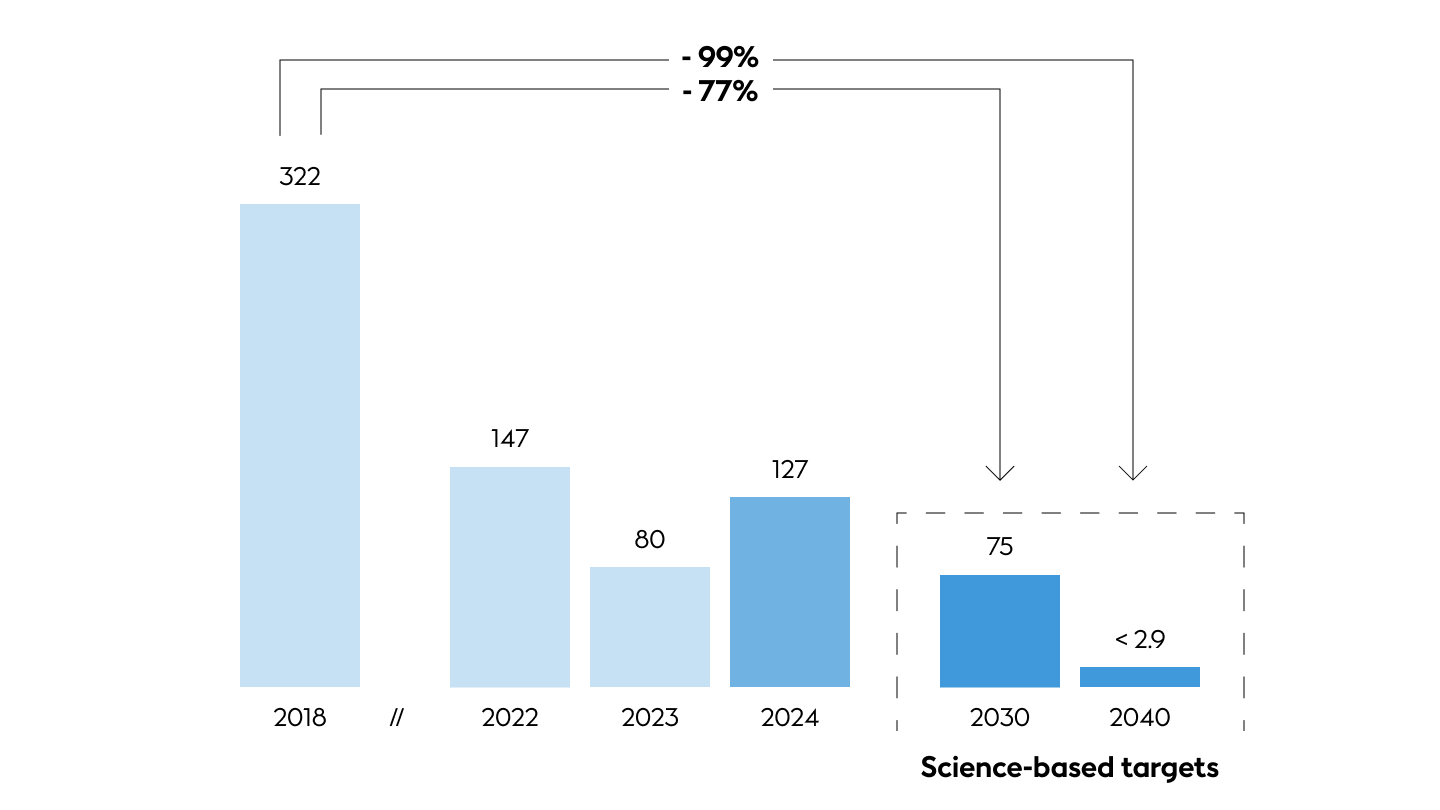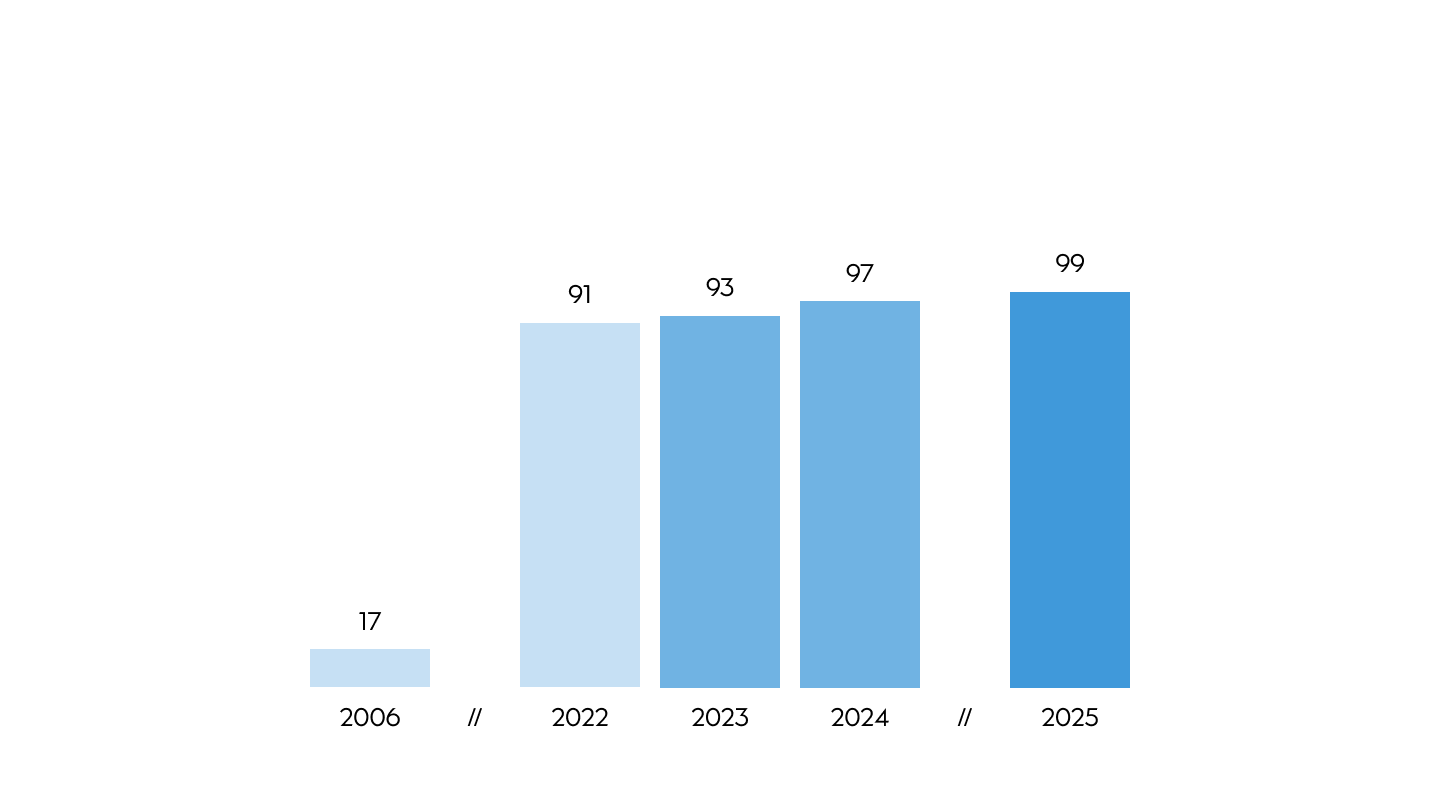Latest updates
In 2024, we fulfilled our commitment to phase out coal by closing our last coal-fired combined heat and power plant. This raised our renewable energy share to 97 % and keeps us on track to achieve a 98 % reduction in scope 1-2 emissions intensity by 2025 (from 2006) – two key milestones towards our 2040 net-zero target.
For more information, please see our annual report 2024, section ‘E1: Climate change’.
What’s next?
We’ll continue driving out emissions across scopes 1 and 2. The aim is to reduce our emissions intensity as much as possible, even beyond our 98 % reduction target.

